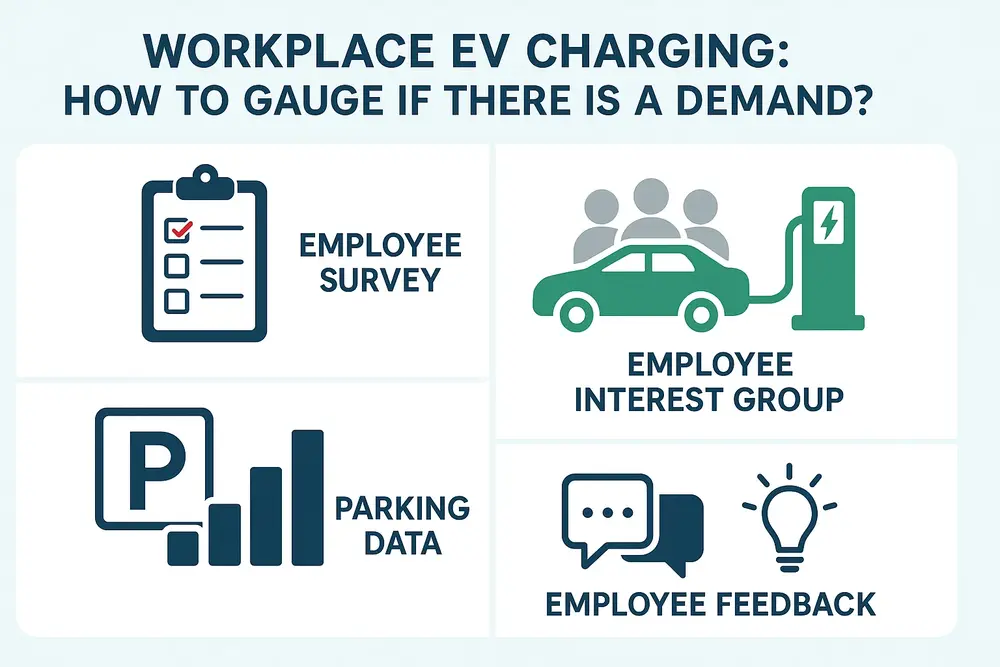
Products
Fast, Reliable, Everywhere

Solutions
Efficient, Innovative EV Charging Solutions.
As electric vehicles (EVs) rapidly become the new normal, businesses must ask: Is there real demand for EV chargers at our workplace? Installing EV infrastructure is a smart move—but only if it meets your employees' actual needs.
Understanding employee attitudes toward EV adoption and their charging preferences is essential to make informed, cost-effective decisions. In this article, we’ll walk you through how to assess internal demand, the role workplace EV charging plays in electrification, and how to future-proof your organization.

The global transition to electric mobility is accelerating. EV sales are hitting record highs, and governments are incentivizing infrastructure buildout. More employees than ever are showing up to work in electric cars—and expect charging options.
According to recent data:
Offering EV charging not only supports your sustainability goals, but also increases employee satisfaction, helps attract top talent, and contributes to a more future-ready business environment.
Start by evaluating how your team gets to the office:
Next, estimate the proportion of EVs among employee vehicles. Walk the parking lot, or better yet, conduct a digital survey asking:
This gives you a snapshot of both current and future charging needs.
Quantitative data is crucial, but direct feedback uncovers motivations, hesitations, and potential blockers to EV adoption.
Key questions to ask employees:
Surveys should also highlight basic EV charging info—such as charging times and station types—for those unfamiliar with the technology.
Work patterns matter:
This determines whether Level 2 AC chargers suffice or if a DC fast-charging solution is required for quick top-ups.
While you may have a small number of EV drivers today, adoption is expected to surge. Your EV infrastructure should scale with:
If infrastructure limitations prevent widespread deployment, consider offering home EV charger subsidies for employees. This alternative:
Besides serving internal staff, EV chargers can also attract external users:
Monetizing access or using workplace chargers to increase foot traffic can open up new revenue streams. Your site may even appear on EV charging maps, boosting brand visibility and eco-credentials.
Installing EV charging stations isn't just about going green—it's about being strategic. Before investing, take the time to understand employee needs and long-term trends. With proper data and planning, workplace charging can become a high-impact initiative that:
Want to get started? Download our free [employee EV charging demand survey template] to evaluate interest and design the right solution for your organization.
